Signs and symptoms
Syphilis can present in one of four different stages:
Primary
Early or primary syphilis. People with primary syphilis will
develop one or more sores. The sores are usually small painless ulcers.
They occur on the genitals or in or around the mouth somewhere between
10-90 days (average three weeks) after exposure. Even without treatment
they heal without a scar within six weeks.
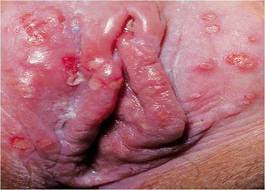
Primary syphilis is typically acquired by direct sexual contact with the infectious lesions of another person. Approximately 3 to 90 days after the initial exposure (average 21 days) a skin lesion, called a chancre, appears at the point of contact. This is classically (40% of the time) a single, firm, painless, non-itchy skin ulceration with a clean base and sharp borders between 0.3 and 3.0 cm in size. The lesion, however, may take on almost any form. In the classic form, it evolves from a macule to a papule and finally to an erosion or ulcer. Occasionally, multiple lesions may be present (~40%), with multiple lesions more common when coinfected with HIV. Lesions may be painful or tender (30%), and they may occur outside of the genitals (2–7%). The most common location in women is the cervix (44%), the penis in heterosexual men (99%), and anally and rectally relatively commonly in men who have sex with men (34%). Lymph node enlargement frequently (80%) occurs around the area of infection, occurring seven to 10 days after chancre formation. The lesion may persist for three to six weeks without treatment.

Secondary
The secondary stage may last one to three months and begins
within six weeks to six months after exposure. People with secondary
syphilis experience a rosy "copper penny" rash
typically on the palms of the hands and soles of the feet. However,
rashes with a different appearance may occur on other parts of the body,
sometimes resembling rashes caused by other diseases. They may also
experience moist warts in the groin, white patches on the inside of the mouth, swollen lymph glands, fever, and weight loss. Like primary syphilis, secondary syphilis will resolve without treatment.
Secondary syphilis occurs approximately four to ten weeks after the primary infection.While secondary disease is known for the many different ways it can manifest, symptoms most commonly involve the skin, mucous membranes, and lymph nodes. There may be a symmetrical, reddish-pink, non-itchy rash on the trunk and extremities, including the palms and soles. The rash may become maculopapular or pustular. It may form flat, broad, whitish, wart-like lesions known as condyloma latum on mucous membranes. All of these lesions harbor bacteria and are infectious. Other symptoms may include fever, sore throat, malaise, weight loss, hair loss, and headache. Rare manifestations include hepatitis, kidney disease, arthritis, periostitis, optic neuritis, uveitis, and interstitial keratitis. The acute symptoms usually resolve after three to six weeks; however, about 25% of people may present with a recurrence of secondary symptoms. Many people who present with secondary syphilis (40–85% of women, 20–65% of men) do not report previously having had the classic chancre of primary syphilis.
Latent
This is where the infection lies dormant (inactive) without causing symptoms.
Latent syphilis is defined as having serologic proof of infection without symptoms of disease. It is further described as either early (less than 1 year after secondary syphilis) or late (more than 1 year after secondary syphilis) in the United States. The United Kingdom uses a cut-off of two years for early and late latent syphilis. Early latent syphilis may have a relapse of symptoms. Late latent syphilis is asymptomatic, and not as contagious as early latent syphilis.
Tertiary
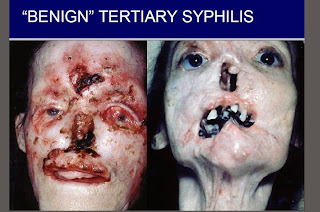
Neurosyphilis refers to an infection involving the central nervous system. It may occur early, being either asymptomatic or in the form of syphilitic meningitis, or late as meningovascular syphilis, general paresis, or tabes dorsalis, which is associated with poor balance and lightning pains in the lower extremities. Late neurosyphilis typically occurs 4 to 25 years after the initial infection. Meningovascular syphilis typically presents with apathy and seizure, and general paresis with dementia and tabes dorsalis. Also, there may be Argyll Robertson pupils, which are bilateral small pupils that constrict when the person focuses on near objects, but do not constrict when exposed to bright light.
Cardiovascular syphilis usually occurs 10–30 years after the initial infection. The most common complication is syphilitic aortitis, which may result in aneurysm formation.
Tertiary syphilis may occur approximately 3 to 15 years after the initial infection, and may be divided into three different forms: gummatous syphilis (15%), late neurosyphilis (6.5%), and cardiovascular syphilis (10%). Without treatment, a third of infected people develop tertiary disease. People with tertiary syphilis are not infectious.
Congenital
Congenital syphilis is that which is transmitted during pregnancy or during birth. Two-thirds of syphilitic infants are born without symptoms. Common symptoms that develop over the first couple years of life include: hepatosplenomegaly (70%), rash (70%), fever (40%), neurosyphilis (20%), and pneumonitis (20%). If untreated, late congenital syphilis may occur in 40%, including: saddle nose deformation, Higoumenakis sign, saber shin, or Clutton's joints among others.
References
- Hogben, M (1 April 2007). "Partner notification for sexually transmitted diseases". Clinical infectious diseases: an official publication of the Infectious Diseases Society of America. 44 Suppl 3: S160–74. doi:10.1086/511429. PMID 17342669.
- "Trends in Sexually Transmitted Diseases in the United States: 2009 National Data for Gonorrhea, Chlamydia and Syphilis". Centers for Disease Control and Prevention. 22 November 2010. Retrieved 3 August 2011.
- David N. Gilbert, Robert C. Moellering, George M. Eliopoulos. The Sanford guide to antimicrobial therapy 2011 (41st ed.). Sperryville, VA: Antimicrobial Therapy. p. 22. ISBN 978-1-930808-65-2.
- Radolf, JD; Lukehart SA (editors) (2006). Pathogenic Treponema: Molecular and Cellular Biology. Caister Academic Press. ISBN 1-904455-10-7.
- "Disease and injury country estimates". World Health Organization (WHO). 2004. Retrieved 11 November 2009.
- Lozano, R (15 December 2012). "Global and regional mortality from 235 causes of death for 20 age groups in 1990 and 2010: a systematic analysis for the Global Burden of Disease Study 2010.". Lancet 380 (9859): 2095–128. doi:10.1016/S0140-6736(12)61728-0. PMID 23245604.
- "Trends in Reportable Sexually Transmitted Diseases in the United States, 2007". Centers for Disease Control and Prevention (CDC). 13 January 2009. Retrieved 2 August 2011.
- "STD Trends in the United States: 2010 National Data for Gonorrhea, Chlamydia, and Syphilis". Centers for Disease Control and Prevention (CDC). 22 November 2010. Retrieved 20 November 2011.
- Kent, ME; Romanelli, F (February 2008). "Reexamining syphilis: an update on epidemiology, clinical manifestations, and management". Annals of Pharmacotherapy 42 (2): 226–36. doi:10.1345/aph.1K086. PMID 18212261.
- Ficarra, G; Carlos, R (September 2009). "Syphilis: The Renaissance of an Old Disease with Oral Implications". Head and neck pathology 3 (3): 195–206. doi:10.1007/s12105-009-0127-0. PMC 2811633. PMID 20596972.
- The Metropolitan Museum of Art Bulletin, Summer 2007, pp. 55–56.
- Rothschild, BM (15 May 2005). "History of syphilis". Clinical infectious diseases: an official publication of the Infectious Diseases Society of America 40 (10): 1454–63. doi:10.1086/429626. PMID 15844068.
- Harper, KN; Zuckerman, MK; Harper, ML; Kingston, JD; Armelagos, GJ (2011). "The origin and antiquity of syphilis revisited: an appraisal of Old World pre-Columbian evidence for treponemal infection". American Journal of Physical Anthropology. 146 Suppl 53: 99–133. doi:10.1002/ajpa.21613. PMID 22101689.
- Nancy G. "Siraisi, Drugs and Diseases: New World Biology and Old World Learning", in Anthony Grafton, Nancy G. Siraisi, with April Shelton, eds. (1992). New World, Ancient Texts (Cambridge MA: Belknap Press/Harvard University Press), pages 159-194
- Dayan, L; Ooi, C (October 2005). "Syphilis treatment: old and new". Expert opinion on pharmacotherapy 6 (13): 2271–80. doi:10.1517/14656566.6.13.2271. PMID 16218887.
- Knell, RJ (7 May 2004). "Syphilis in renaissance Europe: rapid evolution of an introduced sexually transmitted disease?". Proceedings. Biological sciences / the Royal Society. 271 Suppl 4 (Suppl 4): S174–6. doi:10.1098/rsbl.2003.0131. PMC 1810019. PMID 15252975



















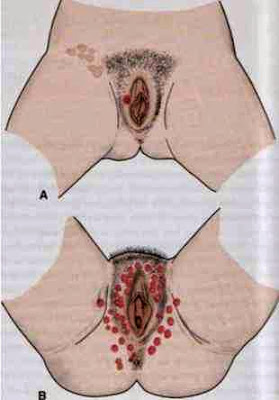
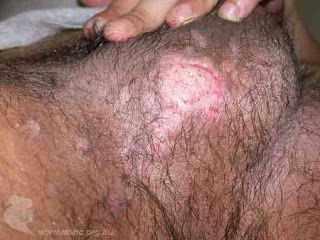
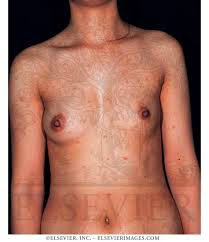

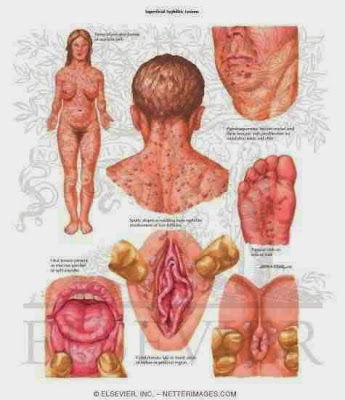

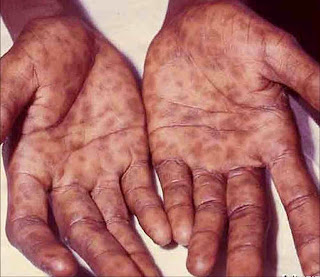




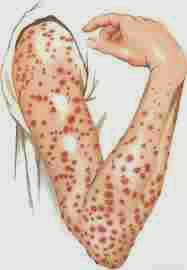
























0 comments:
Post a Comment